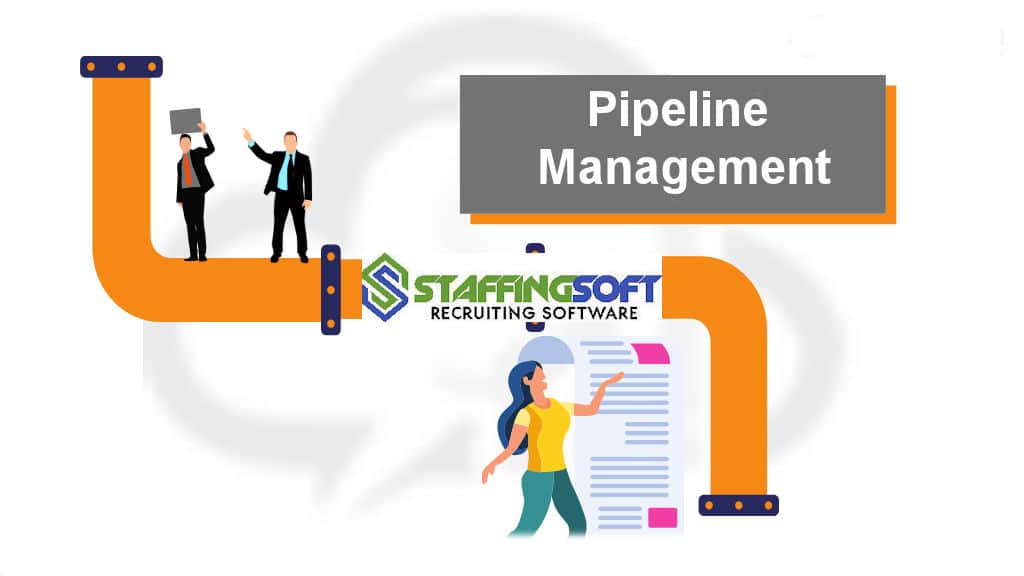Organizations operating in today’s competitive job market need to identify suitable candidates while simultaneously securing a continuous stream of qualified talent.
Human Resources executives now use talent pools and pipeline management as their primary strategies to tackle existing workforce recruitment challenges.
The combination of community outreach and internship programs and educational partnerships with businesses enables organizations to develop effective talent pipelines which generate successful hiring results.
Understanding Talent Pools
A talent pool contains qualified candidates who match current or future job requirements that an organization wishes to fill. The candidates reside in a non-active job-seeking status but possess skills which match the organization’s current requirements.
Maintaining an organized talent pool enables organizations to find candidates more quickly which leads to shorter hiring durations and better hiring success rates.
The Importance of Pipeline Management

The process of pipeline management involves the strategic development of relationships with potential candidates whom organizations maintain over time. Organizations need to identify talent then build relationships with them in order to prepare them for available positions.
The practice of effective pipeline management enables organizations to avoid last-minute hiring needs because it fosters a proactive hiring strategy.
Community Engagement
Building a talent pipeline requires maximum participation from the community. Organizations can create connections with community members by reaching out to residents of specific locations to build up a comprehensive candidate base.
Organizations should participate in job fairs and sponsor community events as well as organize workshops and seminars. The involvement of companies in local community projects helps both build corporate brand awareness and attract local candidates while creating positive community perceptions.
Internships as a Gateway
The connection between higher education and employment finds its vital foundation in internship programs. Through internship opportunities, organizations deliver practical work experience to students and new graduates simultaneously gaining access to potential future staff members.
Internship programs help companies both confirm their candidates’ abilities and personality traits and provide students with experience working in the organization. Organizations can decrease recruitment expenses and shorten recruitment periods by directly offering permanent roles to successful interns.
Partnerships with Educational Institutions

Organizations should collaborate with educational institutions to develop their talent pipelines effectively. Through university and college partnerships and vocational school collaborations organizations can modify academic programs to meet business requirements while developing skill sets in graduates.
Through these partnerships organizations gain exclusive access to student recruitment events and they get to provide guest lectures which allows them to connect with future employees at early stages of their academic careers.
Building a Continuous Engagement Strategy
Organizations building successful talent pipelines need to sustain continuous communication with their potential candidates. Organizations should maintain communication with candidates by sending newsletters and updates along with personalized outreach through various social media channels.
Organizations should distribute industry information alongside company news along with job openings because this practice keeps candidates informed about job opportunities and they become more likely to pursue new positions.
The effective nurturing of potential candidates throughout time becomes possible through technology tools such as applicant tracking systems (ATS) and customer relationship management (CRM) systems.
Measuring Success and Adapting Strategies
Organizations need to track their success with talent pipeline initiatives while adjusting their strategies according to achieved results.
Organizations should monitor three essential performance indicators for talent pool management success: position filling speed, candidate retention and intern satisfaction levels.
- Data analytics allows HR teams to monitor the achievements from their engagement methods. The analysis of candidate sourcing metrics and engagement levels along with hiring results helps organizations detect patterns and potential enhancement points.
- Organizations can obtain pipeline process strengths and weaknesses through feedback loops that connect with interns as well as future employees. HR can refine upcoming initiatives by conducting surveys and engaging in discussions to gather candidate experience data.
- Organizations need to adapt their talent pipeline management strategies to align with changing labor market conditions. The organization should modify internship programs according to changing industry requirements and establish new partnerships with upcoming educational institutions. A competitive edge requires organizations to be flexible and introduce new solutions to their operations.
The Role of Employer Branding
A powerful employer brand stands essential in drawing potential candidates toward joining your talent pipeline. Through active promotion of company culture together with employee success stories and community involvement organizations develop compelling narratives which draw potential candidates.
- Social media channels enable organizations to share their core values and workplace culture which leads to effective employer branding. The organization will draw candidates who share its mission through workplace transparency and employee testimonials along with community engagement activities.
- The organization should create content which explores industry trends and provides leadership insights together with career guidance to establish its authority in the field. The content approach creates two benefits since it draws potential candidates and builds their trust toward employment with the organization.
The Future of Talent Pools and Pipeline Management
Workforce evolution requires organizations to modify their talent acquisition strategies for pools and pipelines management. New workplace trends such as remote work and the gig economy alongside the growing significance of soft skills are altering how businesses attract and keep employees.
- Remote Talent Pools: Organizations that adopt remote work can now find candidates across broader geographic areas. The organization gains access to candidates from various locations which results in a richer diverse workforce.
- Focus on Lifelong Learning: Rapid industry transformations demand organizations to focus on providing continuous learning and upskilling opportunities. To attract more candidates organizations should identify ways to provide professional development support to their candidates.
- Embracing Technology: Recruitment processes will experience greater growth through the integration of artificial intelligence and machine learning technologies. Such tools enable the identification of suitable candidates in talent pools alongside automatic candidate engagement and enhanced hiring efficiency.
Conclusion
Organizations seeking long-term talent acquisition advantages need proactive talent pipelines developed through community engagement and educational institution partnerships and internship programs.
Companies who build relationships with potential candidates will develop a vibrant talent pool that fills current positions while also supporting organizational expansion and flexibility.
HR executives who invest in these strategies will find themselves better equipped to navigate the complexities of the modern labor market and cultivate a workforce that drives innovation and success. The future of any organization demands proactive talent pipeline management because it presents organizations with the chance to develop their future direction.



